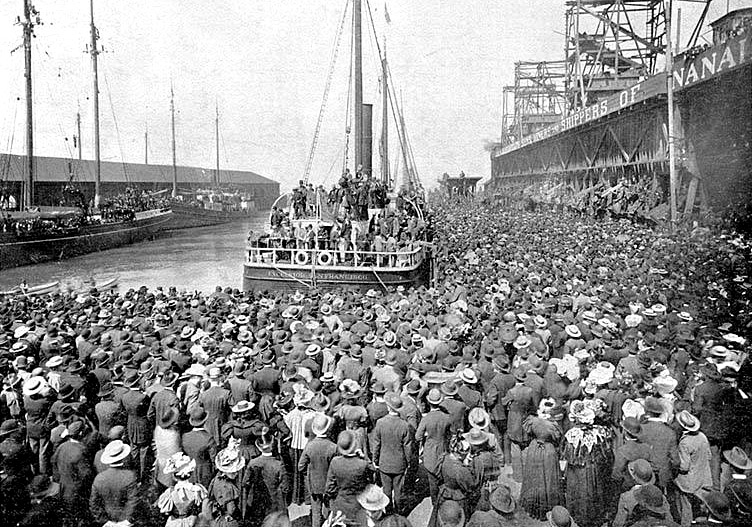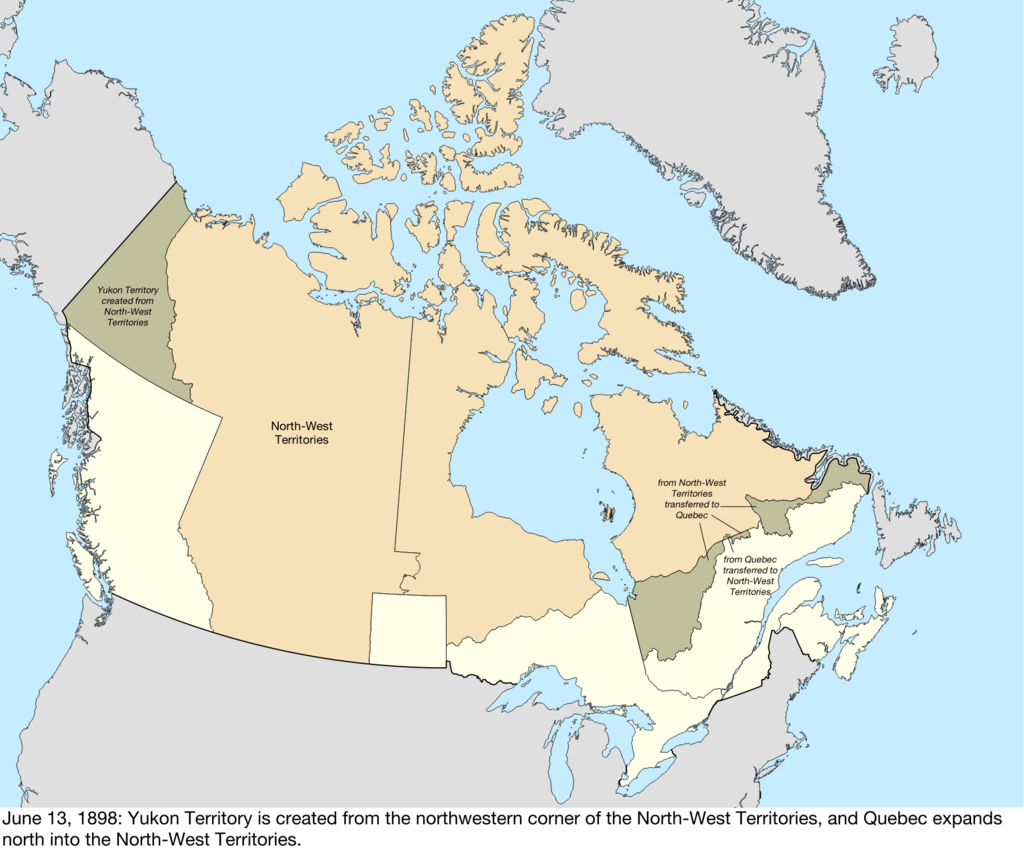When most people think of the Yukon Territory, they think of a barren land of ice and snow which few people want to live in. However, there was a time in history, especially between 1896-1899, when people flocked to the Yukon in the thousands from around North America.

This event is known as the Klondike Gold Rush, which began on August 16, 1896, when local miners in a region known as the Klondike (a region of what is now Yukon) discovered gold. The next year, news reached Seattle and San Francisco which sparked a mass migration of an estimated 100,000 people who flocked to the Klondike in hopes that they could strike rich.
There were a few ways of reaching the Klondike; the most popular was to board a ship headed for the Alaskan ports of Skagway and Dyea, where they would travel a further 48 km over the mountain ranges into Canada, and then ride the Yukon River downstream into the heart of the gold rush, Dawson City.

Along the way, many boom towns were created where many prospectors would gather. These towns were often chaotic, crowded, disorganized, and filthy. Within proper cities, such as Skagway and Dawson City, the situation was better. Although in the US cities, corruption and disorganization were present, in Dawson City, the NWMP kept the city relatively lawful. However, the remoteness caused high prices in food (eggs went up to $81 each in today’s dollars), and the high demand led land to be scarce and extremely expensive. Although, many of the richer people continued to live lavish lifestyles with heavy drinking and gambling.
Ultimately, of the tens of thousands of people that reached Dawson City, only a few thousand ever found any gold and only a few hundred of those became rich. However, only a handful of people kept their fortune. Many lost their fortune with future poor investments, gambling, or alcohol.

By 1899, the Klondike region had advanced immensely. A telegraphy system was established between Skagway and Dawson City, and a railway was constructed between Skagway and Whitehorse. Unfortunately, by this point, most people were finished with looking for gold in this region. The final straw occurred in 1899, when gold was discovered elsewhere in Canada and deeper in Alaska. This prompted another mass migration of people, this time away from the Klondike, marking the end of the Klondike Gold Rush.
The population of Dawson City decreased from its peak of 30,000 around 1898 to 2,000 people in 1912. In the 1970s, only 500 people remained, this number has since grown to about 1,300 people. Dawson City remains a tourist destination where one can discover the history of the gold rush.
The Klondike Gold Rush did have major impacts on Canadian society that is still present today. Prior to the gold rush, the economy of North America was in a depression, with high unemployment rates. The lavish spending caused by the gold rush sparked the economy of all North America.

Furthermore, at the start of the gold rush, the Klondike was part of the Northwest Territories; however, the sudden influx of people called for the need for a local government in the region. As a result, in 1898 Yukon Territory was split from the Northwest Territories. Without the Klondike Gold Rush, the need to establish a separate government in the area may not have been necessary. The gold rush also established infrastructure and an economy in the area, which helped the drive the development of Yukon since then. Even now, the economy of the Yukon benefits from its mining industry. However, the gold rush also pushed indigenous people out of the area, whose land claims have only been addressed recently.
In short, the Klondike Gold Rush had a tremendous impact on how Canada is today and is immortalized in literature such as poet Robert Frost, as well as in various other places, such as the Klondike ice cream bar.

